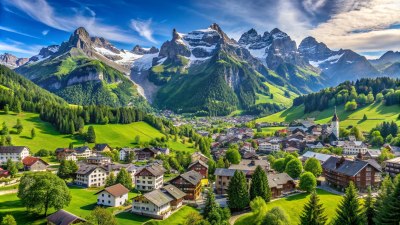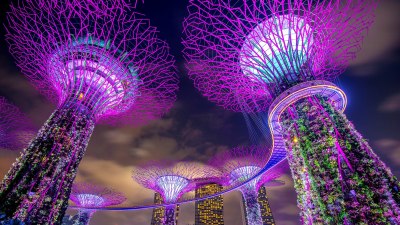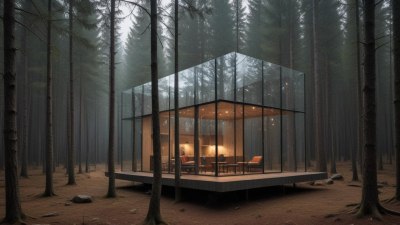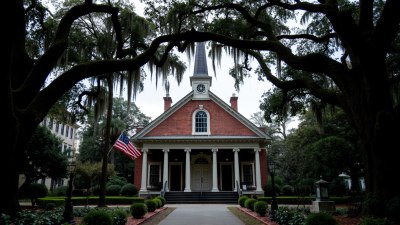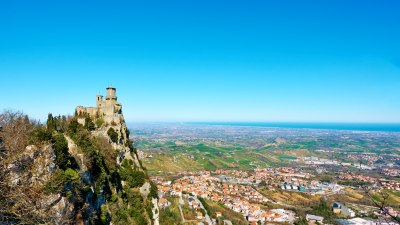When a Place Breathes Louder Than Its People in Siberia
Explore the haunting beauty of Siberia where nature's voice resonates beyond human presence.
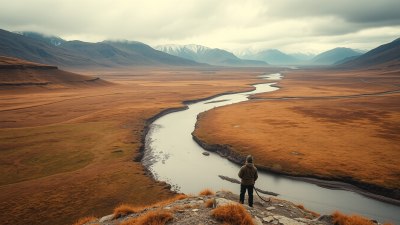
Siberia, a vast and enigmatic region of Russia, is often described as the land of extremes. Spanning over 5 million square miles, it covers nearly 77% of Russia's territory, showcasing a diverse tapestry of landscapes that include dense forests, sprawling tundras, imposing mountains, and expansive rivers. However, beyond its geographical magnitude lies an intricate relationship between the land and its inhabitants, where the essence of the natural world often supersedes that of humanity.
The Siberian wilderness is a realm where silence speaks volumes. In a place where civilization is sporadically interspersed throughout endless stretches of wild nature, one can experience the profound stillness that envelops the environment. The sounds of rustling leaves, roaring rivers, and howling winds echo like a symphony, filling the air with an ethereal quality that contrasts sharply with the subdued voices of its people. As we delve deeper into Siberia, we uncover stories of survival, resilience, and the age-old bond between the land and its residents.
The Geological Wonders of Siberia
Home to some of the planet's most remarkable geological formations, Siberia is a treasure trove of natural wonders. The Lena River, one of the longest rivers in the world, winds its way through the region, offering breathtaking vistas and unique wildlife. Here, the water is crystal-clear, surrounded by towering cliffs and ancient rock formations that have witnessed millennia of natural history. The Lena Pillars, a UNESCO World Heritage site, stand majestically against the backdrop of the river, drawing the eyes of those fortunate enough to make the journey.
Another geological marvel is Lake Baikal, renowned for being the deepest and oldest freshwater lake on Earth. At its deepest point, it plunges over a mile down, teeming with life that exists nowhere else. The massive expanses of ice that form in winter create a surreal landscape where the echoes of nature dominate, further emphasizing the sense that here, the environment speaks louder than people ever could.
The Indigenous Peoples of Siberia
While Siberia is often characterized by its expansive landscapes, it is also home to numerous Indigenous groups who possess deep-rooted connections to the land. The Evenks, Yakuts, and Buryats, among others, have lived in this harsh yet beautiful environment for centuries, cultivating a culture that is intrinsically linked to the natural world. Despite the vastness of the land, these communities have found ways to adapt and thrive, learning to listen to the rhythms of nature and responding to its subtle whispers.
For these Indigenous peoples, the natural environment is not just a backdrop but a vital part of their identity and spirituality. Their traditional practices, including reindeer herding, hunting, and fishing, resonate with the land’s ecosystems. They tell stories of the spirits that inhabit the mountains and rivers, emphasizing a profound respect for nature that underscores their lives. In this sense, the landscape breathes life into their culture, offering wisdom and connection that surpasses spoken words.
The Silence of Urban Life in Siberia
While luxury and modernity have made their way into several cities across Siberia, such as Novosibirsk and Irkutsk, these urban spaces often feel sparse amidst the natural grandeur. The architecture, often functional and unadorned, stands in stark contrast to the rich landscapes surrounding them. In cities, the voices of humans blend into the background noise, whereas the call of nature remains ever-present. The sounds of traffic and construction become mere whispers against the roaring rivers and rustling taiga.
This juxtaposition presents a paradox as residents navigate life amid urban development while holding on to the grandeur of their surroundings. In many ways, the cities of Siberia are a microcosm of the broader tensions experienced by humanity in the face of nature. The urban expanses serve as a reminder that even in a bustling atmosphere, the pulse of the wilderness beats steadily beneath the surface, ever reminding inhabitants of their insignificance against the backdrop of such ecological wonder.
The Breath of Siberian Nature
As spring unfurls its warmth, Siberia transforms dramatically. The once-quiet landscapes awaken to vibrant colors and life, with flowers bursting through the thawed ground and animals emerging from hibernation. The cacophony of life reverberates throughout the fields and forests, encompassing the excitement of rebirth and rejuvenation. Yet even in this lively dance, there exists an undeniable silence, a removal from the hurried chaos of modern life.
This breath of nature is a reminder of the cyclical patterns of life that the region embodies. Each season brings its own rhythm, dictating the lives of both people and wildlife alike. The shifts in temperature and light govern how Indigenous communities engage with the land, reinforcing the notion that they are but caretakers of a space that has its own voice, one that demands respect and understanding.
The Environmental Challenges Facing Siberia
While the natural beauty of Siberia captivates the heart, it is essential to recognize the environmental challenges that threaten its delicate balance. Climate change, driven primarily by human activity, poses significant risks to this pristine landscape. Melting permafrost, which underpins much of Siberia, leads to soil instability and the release of greenhouse gases that have far-reaching implications globally. This vulnerability emphasizes the urgency of addressing human impacts on the environment while fostering a relationship based on stewardship and care.
Moreover, large-scale forestry, mining, and industrial projects continue to encroach upon natural habitats, often displacing Indigenous communities and disrupting their traditional ways of life. The voices of these groups, once echoed through the land, now struggle against the clamor of development and extraction. In this sense, the land's breathing becomes a battle, as the very sounds of its existence are drowned out by machinery and urban expansion.
The Healing Power of Siberian Landscapes
Despite these challenges, the inherent healing power of Siberian nature remains an unwavering force. For those who seek solace, the wilderness offers an escape—an opportunity to reconnect with oneself amid pristine surroundings. The concept of immersion in nature as a form of therapy has gained traction globally, and Siberia embodies this idea with its vast landscapes that invite introspection and contemplation.
Whether trekking through the towering mountains of the Altai, gazing upon the shimmering shores of Lake Baikal, or exploring the dense forests of the taiga, each experience reinforces the truth that the land's voice reverberates within us. It ignites a sense of wonder and deep appreciation for the intricate ties we share with the environment.
The Future of Siberia
As we contemplate the future of Siberia, it is crucial to advocate for sustainable practices that honor both the land and its inhabitants. Engaging with the Indigenous peoples, understanding their needs, and amplifying their voices is vital in ensuring that their wisdom is preserved for future generations. By integrating traditional ecological knowledge with modern conservation efforts, we can work towards a harmonious coexistence that values nature without undermining the rich cultural tapestry that defines Siberia.
The call of Siberia is an evocative reminder of humanity's relationship with the earth. Here, the land breathes louder than people, carving a narrative steeped in continuity, adaptation, and reverence. As the wilderness and its inhabitants navigate the complexities of existence, we are prompted to reflect on our ties to the natural world and the importance of harmony in a rapidly changing environment.


